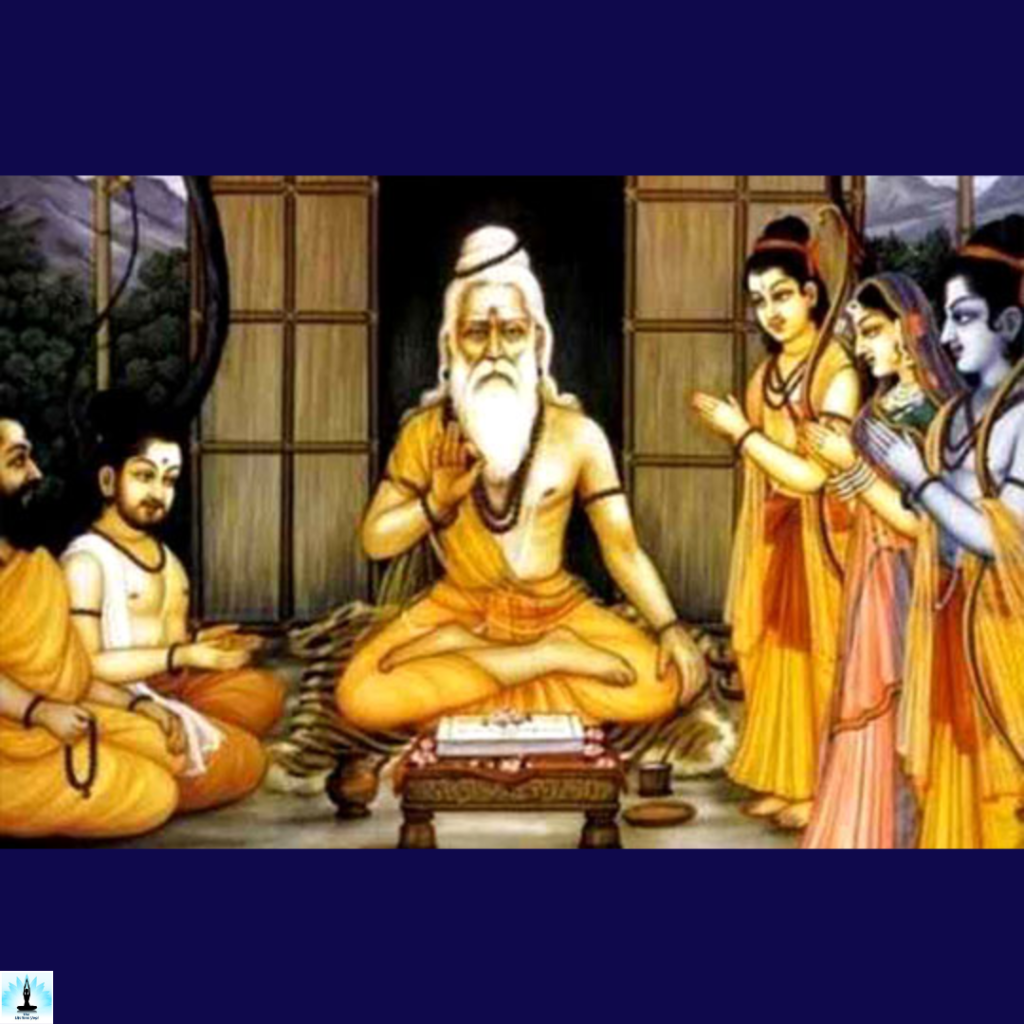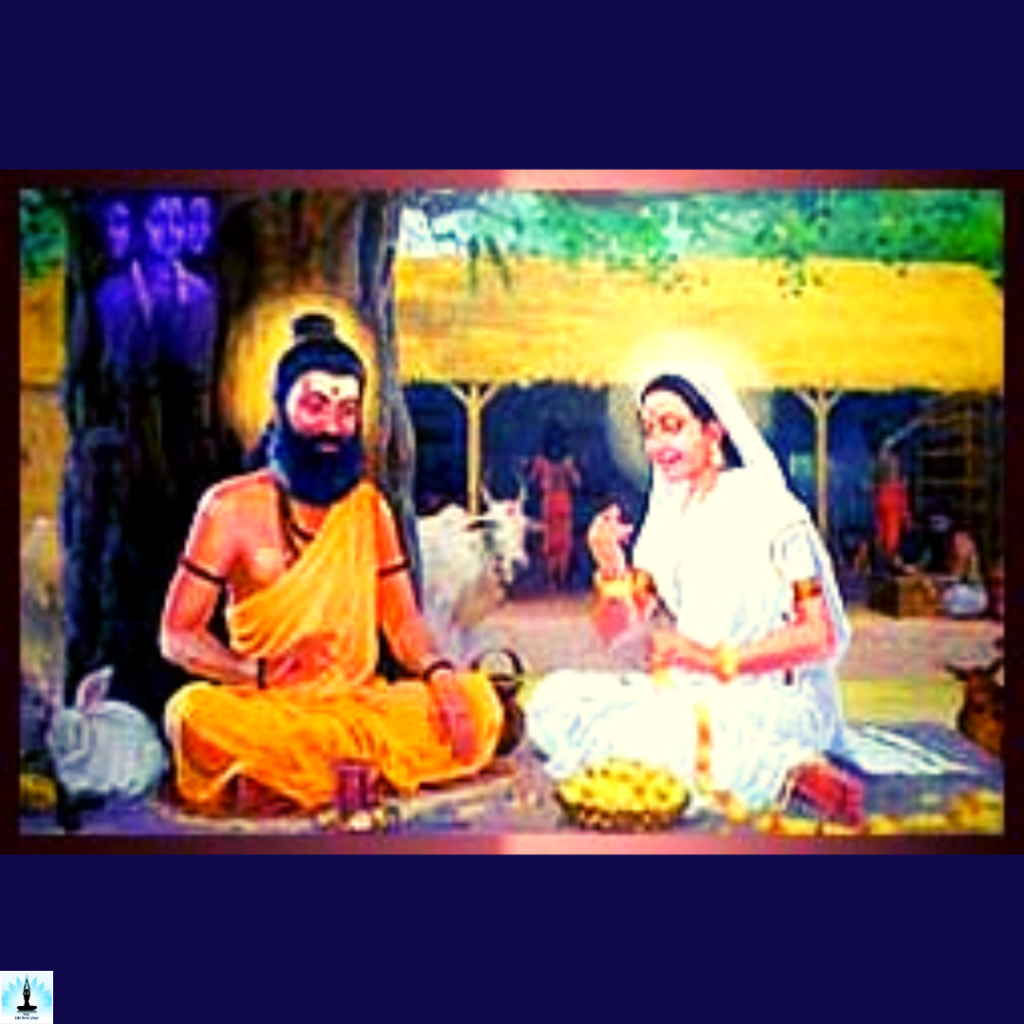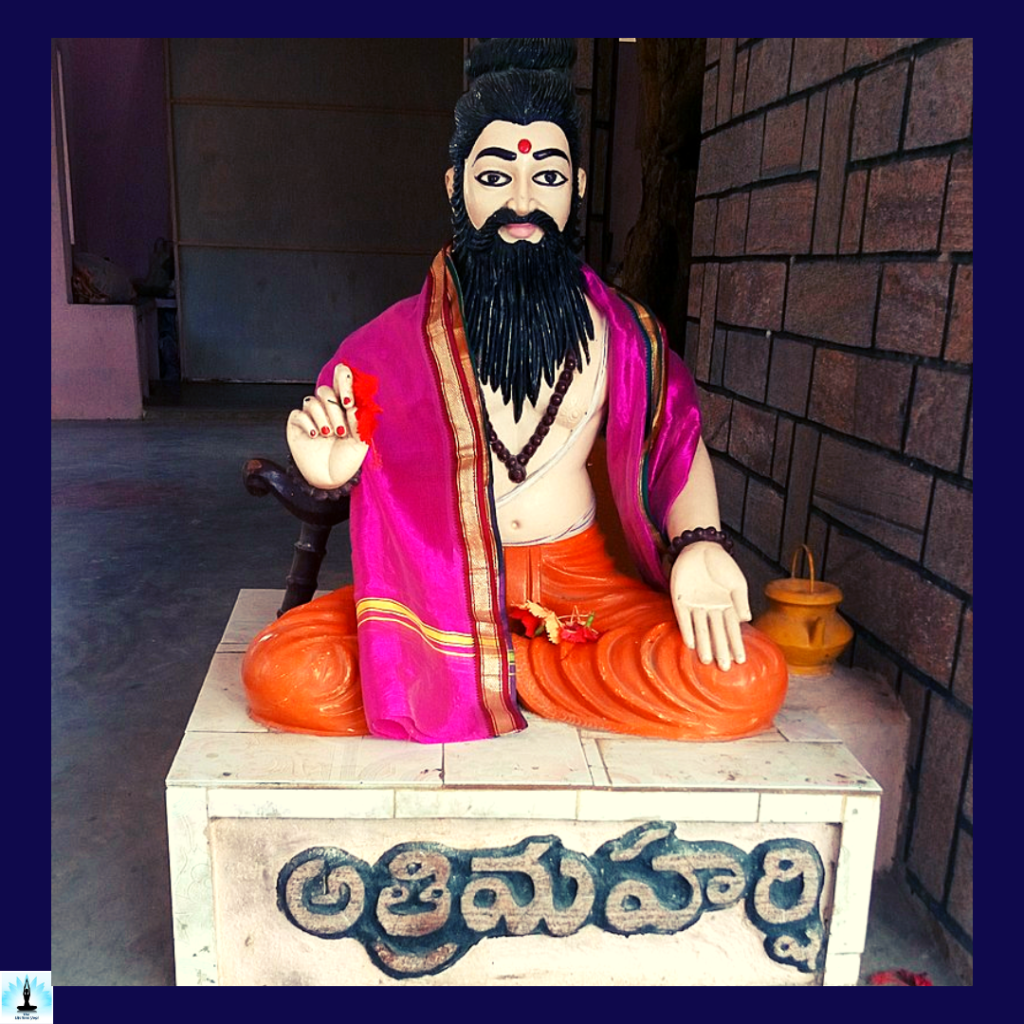Who Was Rishi Atri? What Was the Legends of Rishi Atri and Devi Anusuya?
In the rich philosophy of ancient Indian mythology and Vedic literature, Rishi Atri stands as a luminous figure—a sage whose wisdom and spiritual insights continue to illuminate the path of seekers. Let’s delve into the life, teachings, and profound legacy of Rishi Atri.
Table of Contents
Who Was Rishi Atri?

Early Life and Divine Origin of Rishi Atri
Rishi Atri, a luminary in Hindu mythology, commenced his earthly journey with a divine origin. Born from the mind of Brahma, the creator in Hindu cosmology, Atri’s lineage is traced through the celestial realms, establishing him as one of the Sapta Rishis—the seven great sages.
This unique birth from Brahma signifies Atri’s profound connection to the cosmic order and positions him as a custodian of ancient Vedic wisdom. From the inception of his existence, Atri embodies the synthesis of divine lineage and spiritual purpose, setting the stage for a life characterized by sacred pursuits and celestial connections.
Marriage, Offspring, and Spiritual Eminence of Rishi Atri
Atri’s life takes a pivotal turn with his union with Anusuya Devi, a union considered sacred and emblematic of purity and devotion in Hindu mythology. Together, they become the parents of three extraordinary sons—Dattatreya, Durvasa, and Chandra.
These offspring, born of spiritual eminence, contribute significantly to the Vedic narrative, each leaving an indelible mark on the ancient tapestry of Indian philosophy. Atri’s legacy expands further as he engages in intense tapasya, drawing the attention of the Hindu trinity—Brahma, Vishnu, and Shiva.
What Was the Legends of Rishi Atri and Devi Anusuya?

One of the well-known stories surrounding Rishi Atri centers on his marriage to Anusuya. Their union is considered a divine union of purity and devotion. Anusuya is celebrated for her stanch chastity, and the couple’s devotion to each other is revered in Hindu mythology.
The legends narrate that Anusuya’s exceptional virtue attracted the attention of the divine trinity—Brahma, Vishnu, and Shiva—who, curious to test her fidelity, approached her in the guise of seekers begging for alms. Unfazed by the divine disguise, Anusuya treated them with utmost respect and hospitality.
The trinity, moved by her unwavering virtue, revealed their true forms and blessed her with the boon of motherhood. This divine encounter accentuates the significance of Anusuya’s purity and the transformative power of virtue.
Divine Offspring and Spiritual Guidance of Rishi Atri
The legendary union of Atri and Anusuya bore fruit in the birth of three illustrious sons—Dattatreya, Durvasa, and Chandra. Each of these offspring, born of divine lineage, contributed uniquely to the spiritual heritage of ancient India.
Atri and Anusuya, residing in their hermitage in Chitrakuta, welcomed even Lord Rama, Sita, and Lakshmana during their exile. Atri’s hut, described amidst serene surroundings with celestial music and divine presence, became a haven for seekers of spiritual wisdom.
This legend not only emphasizes the sanctity of marital devotion between Atri and Anusuya but also highlights their role as spiritual guides, offering wisdom and counsel to those traversing the arduous paths of life. The enduring legends of Atri and Anusuya continue to inspire devotees, illustrating the transcendental power of virtue and the profound impact of a union steeped in divine grace.
Meditative Austerities of Rishi Atri
Rishi Atri, a venerable sage in Hindu tradition, embarked on a transformative journey marked by profound meditative austerities, known as tapasya. This ascetic practice, undertaken with untiring dedication and spiritual fervor, served as the crucible through which Atri sought to attain higher states of consciousness and communion with the divine.
The intensity of his tapasya was not merely a physical endeavor but a deep, inward exploration of the self and a communion with cosmic energies. Atri’s secluded contemplation, often amidst nature and austere surroundings, became a conduit for spiritual realization, paving the way for divine encounters and celestial boons that enriched his spiritual journey.
Divine Boons and Spiritual Realization of Rishi Atri
The meditative austerities of Rishi Atri bore fruit as the Hindu trinity—Brahma, Vishnu, and Shiva—responded to his profound devotion. Appearing before him, they bestowed divine boons that elevated Atri’s spiritual standing.
These celestial encounters not only validated the depth of his tapasya but also enriched the sage with sacred insights and blessings. Atri’s meditative pursuits were not solitary endeavors; they resonated with the cosmic rhythm, contributing to the larger Vedic narrative and reinforcing the interconnectedness of the sage with the celestial forces.
The meditative austerities of Rishi Atri stand as a testament to the transformative power of spiritual discipline, illustrating how profound inner exploration can lead to divine communion and the unfolding of higher realms of consciousness.
Spiritual Significance and Contributions of Rishi Atri
Rishi Atri’s spiritual significance extends beyond his earthly existence. He is revered for his selfless devotion, deep wisdom, and commitment to the pursuit of spiritual truths. Many hymns and verses in the Rigveda are attributed to him, showcasing his poetic and philosophical prowess.
The Atri Smriti

Rishi Atri is attributed with the creation of the Atri Smriti, a significant ancient Indian legal and ethical text. This work addresses various aspects of dharma (righteousness) and provides guidelines for leading a virtuous life. The Atri Smriti reflects the sage’s deep understanding of societal conduct and ethical principles.
Atri’s influence extends to the Vaikhanasas sub-tradition in Vaishnavism, with their theology credited to sages including Atri. The Atri Samhita, a text from this tradition, discusses conduct, yoga, and ethics. Atri’s legacy persists in the cultural fabric of South India, particularly among the Vaikhanasas community. His teachings on self-restraint, charity, and compassion continue to guide adherents in their Vedic heritage.
Contributions to Ayurveda
Ayurveda, the ancient system of medicine, has roots in the wisdom of the Rishis. Rishi Atri is recognized for his contributions to Ayurveda, particularly in the formulation of medicinal herbs and practices that promote holistic well-being.
Legacy and Reverence of Rishi Atri
Rishi Atri’s legacy continues to inspire spiritual aspirants and scholars. His teachings emphasize the importance of austerity, meditation, and righteous living on the path to self-realization. The reverence for Rishi Atri is reflected in the numerous temples and shrines dedicated to him across India.
Celebration in Hindu Festivals in the Name of Rishi Atri
The festival of Atri Anusuya Jayanti is observed in honor of Rishi Atri and Anusuya. Devotees express their reverence through prayers, rituals, and the study of scriptures associated with the sage.
In the contemporary world, Rishi Atri’s teachings remain relevant. His emphasis on spiritual discipline, ethical conduct, and the pursuit of knowledge offers valuable insights for navigating the complexities of modern life with wisdom and grace.
FAQs on “Who Was Rishi Atri? What Was the Legends of Rishi Atri and Devi Anusuya?”
1. Who is Rishi Atri in Hindu mythology?
Rishi Atri is a revered sage in Hindu mythology and one of the Sapta Rishis, the seven great sages. He is renowned for composing hymns dedicated to Vedic deities, particularly Agni, Indra, and others, as found in the Rigveda.
2. What is the significance of the Atri Mandala in the Rigveda?
The Atri Mandala is the fifth Mandala (Book 5) of the Rigveda, named in honor of Rishi Atri. It comprises 87 hymns attributed to Atri and his descendants, showcasing their spiritual insights and contributions to Vedic literature.
3. How is Atri related to the Hindu trinity?
Atri’s tapasya (meditative austerities) pleased the Hindu trinity—Brahma, Vishnu, and Shiva. In response to his devotion, they appeared before him and granted divine boons, illustrating his connection to the cosmic forces.
4. What are the legends associated with Atri and Anusuya?
Atri’s union with Anusuya, a paragon of virtue, is legendary. The couple had three sons—Dattatreya, Durvasa, and Chandra. Anusuya’s exceptional chastity attracted the divine trinity, who tested her virtue and blessed her with motherhood.
5. What is the role of Atri in the Ramayana?
In the Ramayana, Rama, Sita, and Lakshmana seek counsel from Atri and Anusuya during their exile. Atri’s hermitage in Chitrakuta becomes a haven, and the sage imparts guidance to the revered characters in the epic.
6. Is Atri associated with any legal and ethical texts?
Yes, Atri is credited with the creation of the Atri Smriti, an ancient Indian legal and ethical text. This compilation addresses various aspects of dharma (righteousness) and societal conduct.
7. How is Atri revered in contemporary times?
Atri continues to be venerated in Hinduism, with festivals like Atri Anusuya Jayanti celebrated in his honor. His teachings on spirituality, ethical living, and devotion remain relevant and inspire spiritual aspirants today.
Conclusion
In concluding our exploration of Rishi Atri, we find a timeless figure whose radiance transcends the pages of ancient texts. His life exemplifies the transformative power of tapasya, the sanctity of marital devotion, and the enduring impact of a sage whose wisdom continues to guide seekers on the path of self-discovery. As we reflect on the legacy of Rishi Atri, we are reminded that the light of spiritual wisdom, once kindled, has the power to illuminate the darkest corners of our existence, leading us toward the eternal truth that resides within.
Reference
- Stephanie W. Jamison; Joel P. Brereton (2014). The Rigveda. Oxford University Press. pp. 1622–1623. ISBN 978-0-19-937018-4.
- Jan Gonda (1969). Aspects of Early Viṣṇuism. Motilal Banarsidass. pp. 241–242 with footnote 30. ISBN 978-81-208-1087-7.
- Atri (Mahaṛiṣi.); V. Raghunathachakravarti Bhattacharya; Mānavalli Rāmakr̥ṣṇakavi (1943). Samurtarchanadhikarana (Atri-samhita). Tirumalai-Tirupati Devasthanams Press.
- Sathyamayananda, Swami. Ancient sages. Mylapore, Chennai: Sri Ramakrishna Math. pp. 17–20. ISBN 81-7505-356-9.
- Ramayana, Valmiki (1952). Ramayana of Valmiki. India: Hari Prasad Shastri. pp. Book 7, chapter 1. ISBN 9789333119597.
